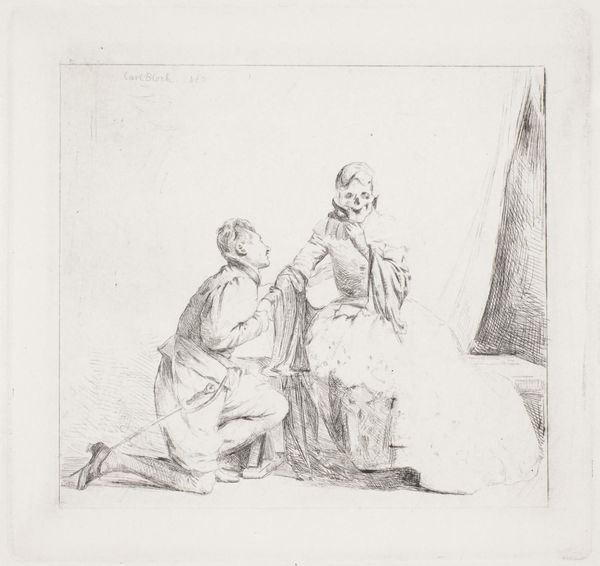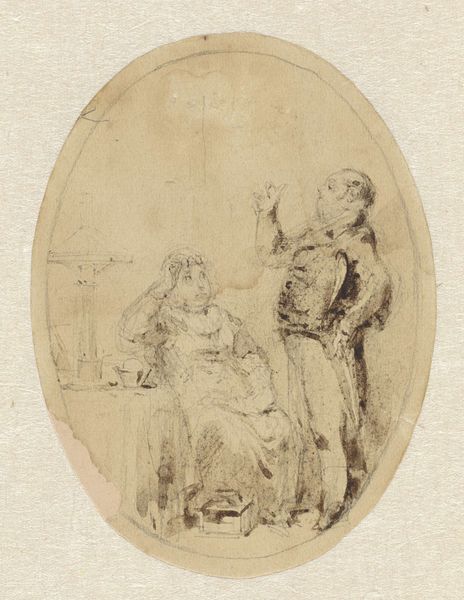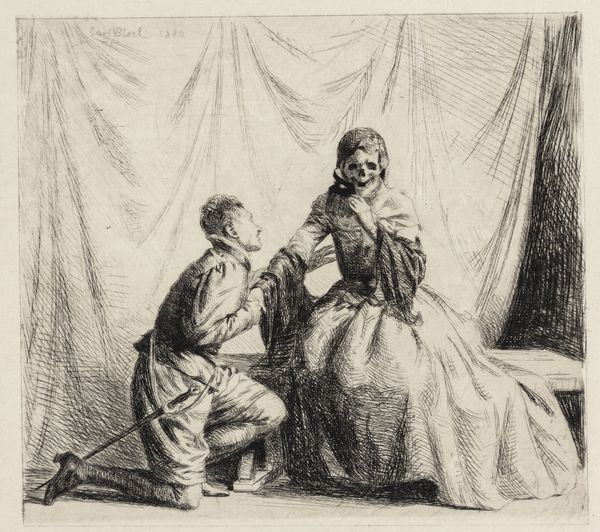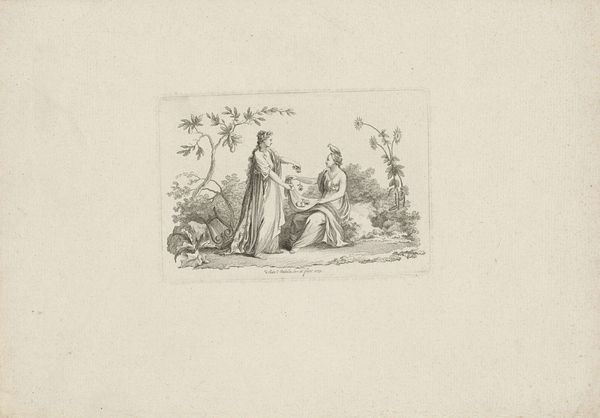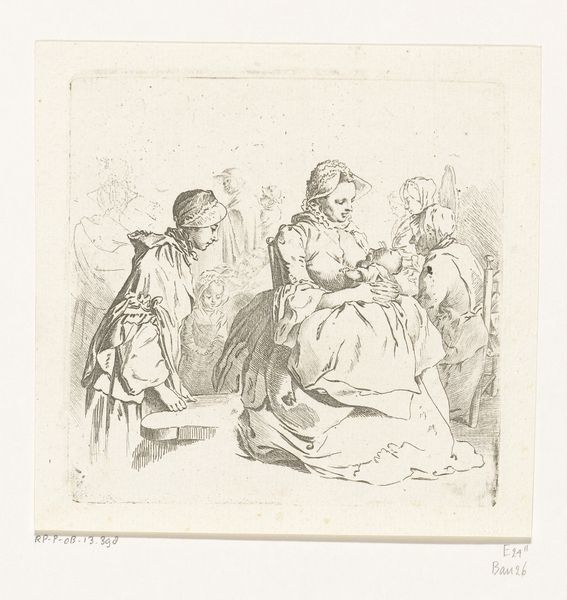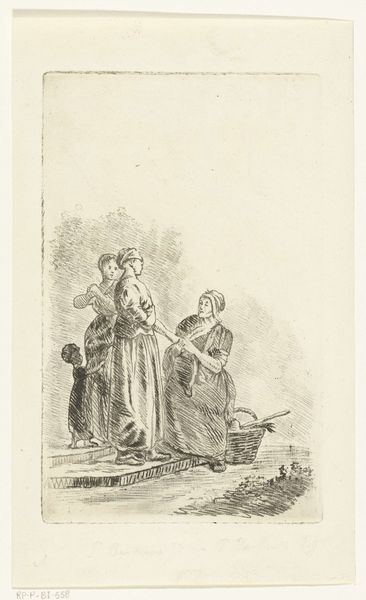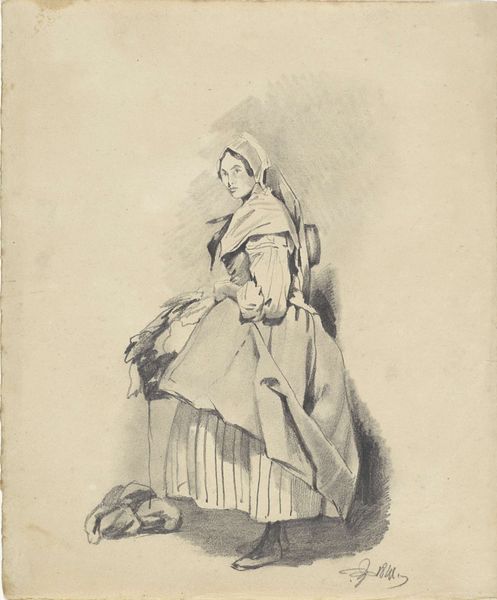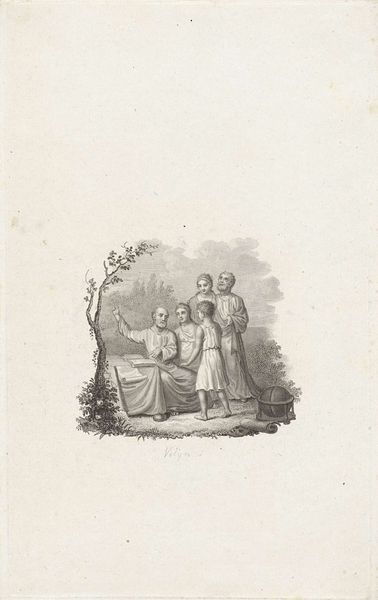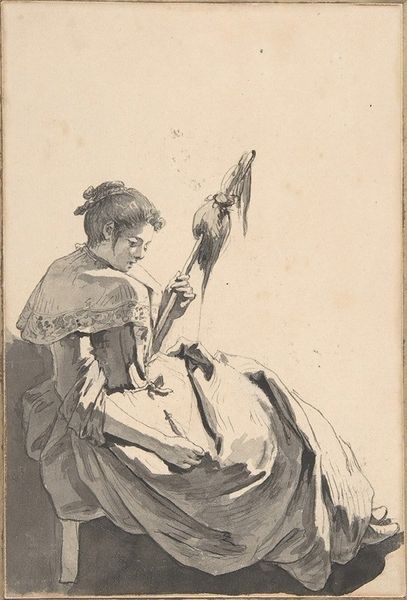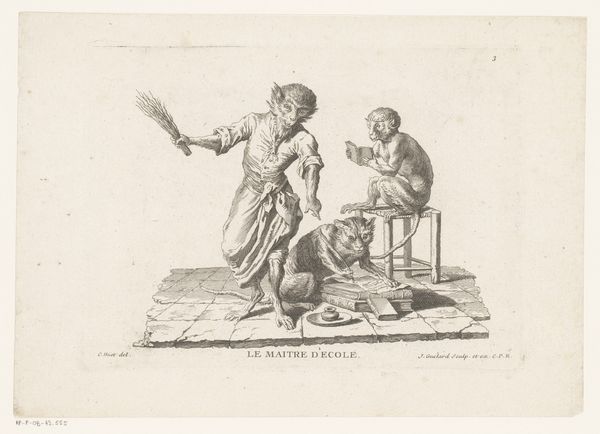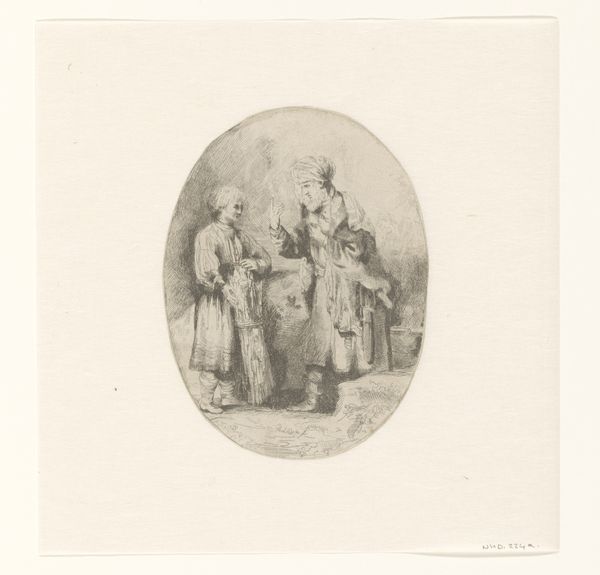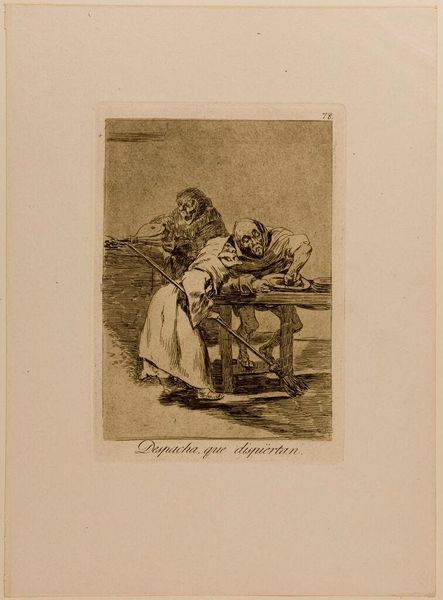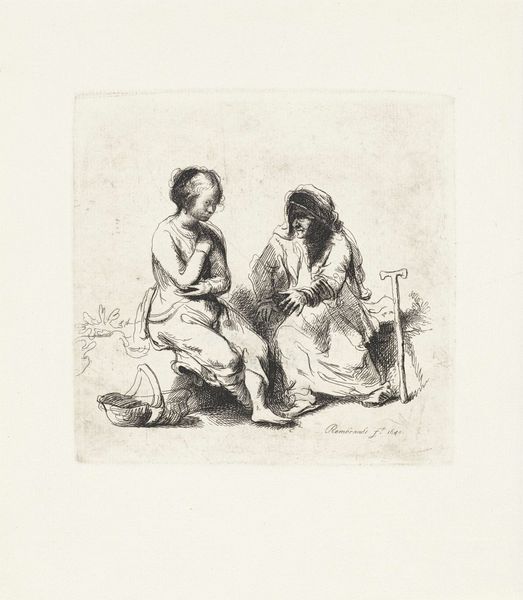
Dimensions: 164 mm (height) x 174 mm (width) (bladmaal), 125 mm (height) x 132 mm (width) (plademaal)
Editor: So, this is *The Young Man and Death*, an etching by Carl Bloch, created around 1880. It's a pretty stark image – very detailed line work. I’m curious, what stands out to you about it? Curator: Immediately, I consider the materials involved: the copper plate, the acid used for etching, the paper, and the printing press. These are not just neutral tools, but technologies shaped by specific economic and social conditions of 19th-century printmaking. Think about who had access to these means of reproduction. It also speaks volumes about dissemination and consumption, right? This artwork wasn't just about aesthetic expression, but also about its affordability, distribution to a wide audience. How does that affect our perception, knowing its likely role in middle-class domestic spaces? Editor: That's an interesting angle! I guess I was focusing more on the… the allegory. You know, death as a figure. Curator: But the allegory *itself* is materially produced! Bloch's decision to depict this subject using etching links it to a history of printmaking. An engraving can disseminate particular values or world views. What stories were typically considered worthy subjects, or morally upright lessons for consumers of these prints? Consider too the labour involved, from the artist's hand to the printer's. These considerations open the way to critique assumptions around romanticism, its individualism and purported transcendent visions. Editor: I hadn't really considered how the technique and availability influenced the content like that. It makes you wonder about what other messages were being pushed by the artist or the culture at large through more widely consumed prints. Thanks, that gives me a lot to consider. Curator: Indeed. Material considerations push us beyond simplistic readings and locate art firmly within complex economic and social structures.
Comments
No comments
Be the first to comment and join the conversation on the ultimate creative platform.
